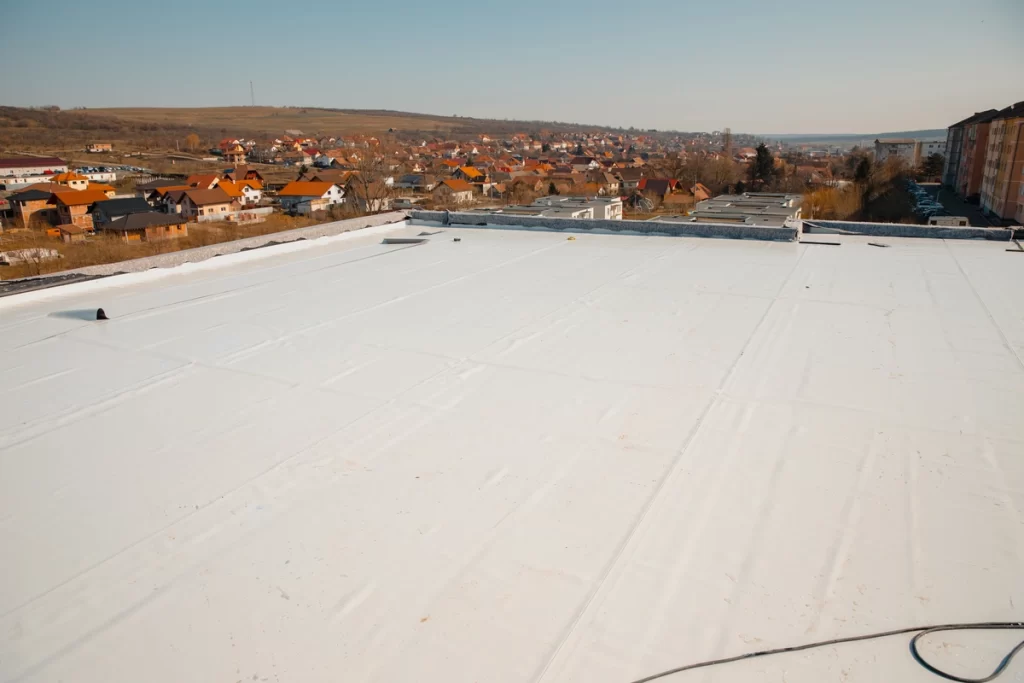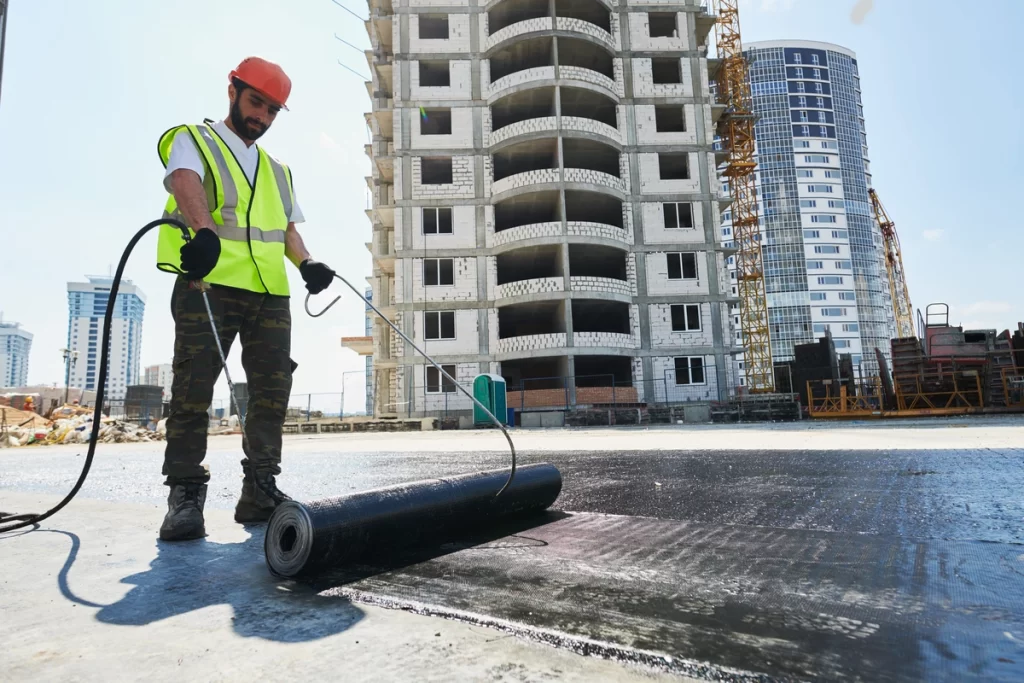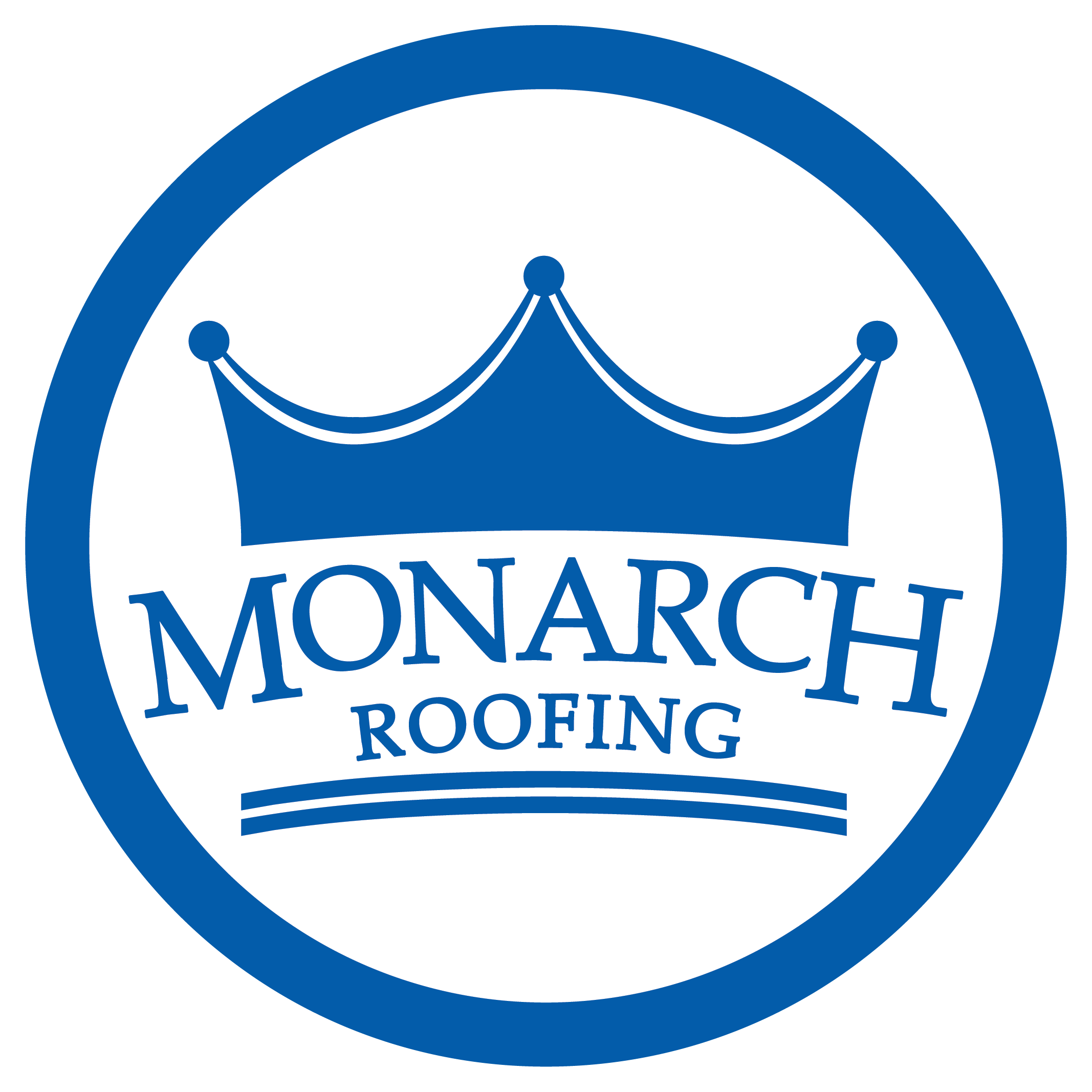When it comes to roofing, one size does not fit all. Different architectural styles, climates, and budgets demand different roofing solutions.
Looking to explore your roofing options?
One roofing style that has gained popularity in recent years is the low slope roof. This versatile roofing option offers unique advantages and disadvantages, various styles, and a wide range of materials to choose from. In this comprehensive guide, we will delve into:
- What a low slope roof is
- Its advantages and disadvantages
- Different styles
- Available materials
- Essential maintenance tips
What Is a Low Slope Roof?

A low slope roof, also known as a flat roof, is a roofing style characterized by its gentle slope, typically with a pitch of 2:12 or less. In other words, for every 12 inches of horizontal run, the roof rises only 2 inches or less. This minimal slope creates a nearly flat surface, distinct from the steeper slopes of traditional roofs. Low slope roofs can be found on various types of buildings, including commercial structures, modern homes, and even some historic properties.
✅ Advantages of Low Slope Roofs
- Aesthetic Appeal: Low slope roofs offer a sleek, modern appearance that can enhance the overall aesthetics of a building. Their clean lines and minimalist design can complement contemporary architectural styles.
- Efficient Use of Space: The flat surface of a low slope roof can be utilized for various purposes, such as rooftop gardens, solar panels, HVAC equipment, or outdoor living spaces, making it an efficient use of otherwise unused space.
- Easier Maintenance: Low slope roofs are often easier to inspect and maintain compared to steep-sloped roofs, as they are more accessible and provide a safer working environment for roof professionals.
- Energy Efficiency: When properly insulated and constructed, low slope roofs can provide excellent thermal performance, reducing energy consumption and heating/cooling costs.
- Cost-Effective: Installation of a low slope roof can be more cost-effective than a steep-sloped roof, especially for large commercial buildings.
❌Disadvantages of Low Slope Roofs
- Limited Drainage: One of the primary challenges with low slope roofs is drainage. Due to their minimal slope, they are more prone to water pooling, which can lead to leaks and water damage if not properly managed.
- Maintenance Intensive: While maintenance can be easier, low slope roofs still require regular upkeep, including debris removal and inspections to prevent issues like ponding water.
- Vulnerable to Leaks: The minimal slope and flat surface make low slope roofs more susceptible to leaks and moisture infiltration if not adequately waterproofed and maintained.
- Lifespan Concerns: Low slope roofs may have a shorter lifespan compared to steep-sloped roofs, depending on the quality of materials and workmanship.
5 Different Styles of Low Slope Roofs
Low slope roofs come in various styles, each offering a distinct architectural look and functionality:
1) Flat Roof:
The simplest and most common style, a flat roof is truly flat with no visible slope. This style provides a minimalist, modern appearance and efficient use of space.
2) Shed Roof:
This style resembles a single slope or shed, often sloping from the front to the back of the building. It’s an attractive option for contemporary designs and provides efficient drainage.
3) Mansard Roof:
A mansard roof combines a nearly flat top with steep slopes on all sides. This style offers the advantage of additional interior space in the attic or upper floor.
4) Butterfly Roof:
The butterfly roof features two sloping panels that meet at a central point, creating a butterfly-like shape. This design allows for maximum natural light penetration and a unique architectural look.
5) Green Roof:
Also known as a living roof, this style incorporates vegetation and plants on the roof surface. It provides insulation, stormwater management, and an eco-friendly appearance.
Low Slope Roofing Materials
Choosing the right roofing material is crucial for the longevity and performance of your low slope roof. There are various materials to consider, each with its own set of advantages and disadvantages:
- Built-Up Roofing (BUR): BUR consists of multiple layers of asphalt-impregnated felt or fiberglass, with bitumen or tar applied between each layer. It’s a cost-effective and durable option with good waterproofing properties.
- Modified Bitumen: Modified bitumen is a type of BUR with added modifiers for increased flexibility and durability. It comes in rolls or sheets and is often applied with torches or adhesives.
- Single-Ply Membranes: These membranes, including TPO (Thermoplastic Olefin), PVC (Polyvinyl Chloride), and EPDM (Ethylene Propylene Diene Monomer), offer ease of installation and excellent waterproofing properties.
- Metal Roofing: Metal roofing, such as standing seam or corrugated panels, can be an attractive and long-lasting option. It reflects heat, making it energy-efficient, but proper insulation is essential.
- Roof Coatings: Reflective roof coatings, such as silicone or acrylic, can be applied over existing roofing materials to extend their lifespan, improve energy efficiency, and enhance waterproofing.
Maintenance Tips for Low Slope Roofs

To maximize the lifespan and performance of your low slope roof, follow these essential maintenance tips:
- Regular Inspections: Conduct regular inspections to check for signs of damage, debris accumulation, or ponding water. Address any issues promptly to prevent further damage.
- Clear Debris: Remove leaves, branches, and other debris from the roof surface to prevent clogged drains and water pooling.
- Maintain Drainage Systems: Keep gutters, downspouts, and drainage systems clear of debris to ensure proper water flow off the roof.
- Waterproofing: Ensure that the roof’s waterproofing is intact and functioning correctly. Address any cracks, gaps, or deteriorating sealant promptly.
- Professional Inspection: Schedule annual or semi-annual professional inspections to assess the overall condition of the roof and identify any potential problems.
- Snow Removal: In areas with heavy snowfall, timely removal of snow and ice can prevent excessive weight and potential structural damage.
Low Slope Roofing Experts!
Low slope roofs offer a range of advantages, from aesthetic appeal to efficient use of space, but they also come with unique challenges, such as drainage and maintenance requirements. Selecting the right style and roofing material is essential for a successful low slope roof installation. Regular maintenance and proper care will ensure the longevity and performance of your low slope roof, allowing you to enjoy its benefits for years to come.
Whether you’re considering a low slope roof for your home or business, let Monarch Roofing help ensure that your roofing system is safe and effective for years to come! Contact us today to learn more.





